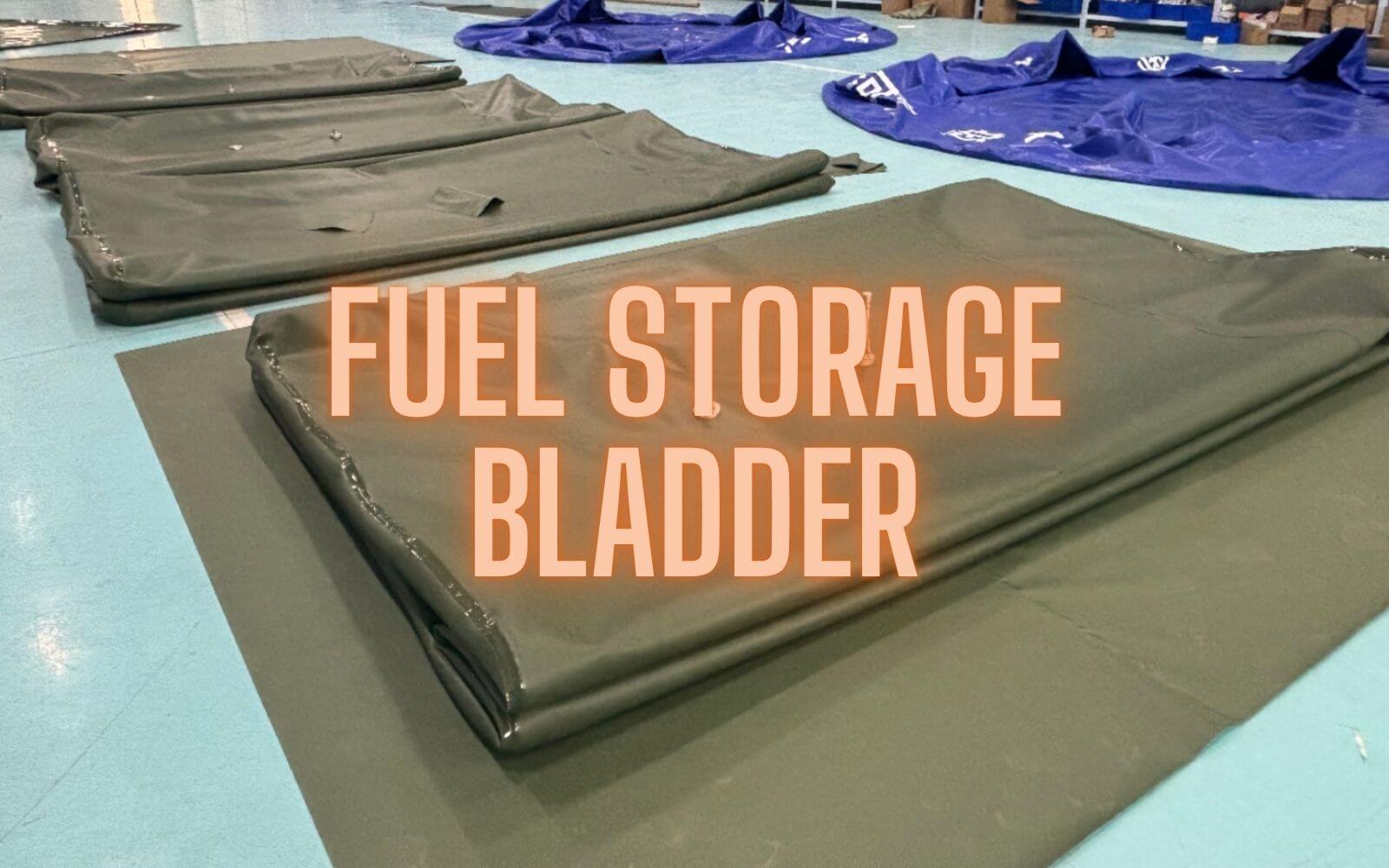FUEL STORAGE BLADDER
In industries where reliable fuel storage is important—from mining operations to military deployments—fuel storage bladders have become the easy-go-to solution for portable, durable, and cost-effective liquid containment. Unlike traditional rigid tanks, these flexible fuel containers offer unmatched versatility while meeting strict safety standards.
This comprehensive guide covers:
What fuel storage bladders are and how they provide good performance than metal tanks
Material comparisons: TPU vs. PVC.
Key components that ensure safe operation
Customization options for specialized needs
What Is a Fuel Storage Bladder?
A fuel storage bladder (also called a collapsible fuel tank or flexible fuel container) is a heavy-duty, fuel-impermeable bag designed to safely store and transport diesel, gasoline, jet fuel, or biodiesel.
These bladders are engineered to:
✔ Fold when empty – Reducing storage space by up to 90%, the 10,000L fuel bladder can fold and pack into 0.3m3 carton, when empty.
✔ Deploy rapidly – Ready to use in mins to hours vs. permanent tanks requiring construction. Flexible bladder can deploy fast in 3 steps: unfold, fill and done.
✔ Resist corrosion – Unlike steel tanks that rust over time. Not only anti-rust, the fuel bladder tanks are UV-resistant, algae-proved,etc.
How They Work
Cleaning the ground which will place the fuel bladder, making sure there is no sharp stuff may cause damage of the bladders.
The empty bladder lay out on level ground.
Connecting the fittings with inlet and outlet ports, after connected, closing the outlet port, turning on the inlet port to fill the bladder tanks.
When not using the tank, empty it, the bladder collapses for compact storage or transport.
Fuel Bladder Materials: TPU vs. PVC
The material determines chemical compatibility, lifespan, and safety. Here’s how the top options compare:
| Material | Best For | Lifespan | Key Features |
| Thermoplastic Polyurethane (TPU) | Diesel, biodiesel, jet fuel | 8–12 years | Excellent chemical resistance, static-dissipative |
| PVC-Coated Polyester | Short-term fuel storage or water storage | 3–5 years | Budget-friendly, moderate UV resistance |
Why TPU Dominates Fuel Storage:
✅ Resists degradation from hydrocarbons (diesel, gasoline)
✅ Static-safe – Meets NFP 30 requirements
✅ -40°C to +90°C operational range
Key Components of a Fuel Storage Bladder
1. Shape Customization
Flexible fuel storage bladder can do the customization, especially for the limited space, the regular shape: pillow or square shape, but beisdes the regular shapes, the specific shape sometimes needed. So by limited place, factory can make the drawings came true.
2. Fuel-Compatible Valves
Camlock or API fittings for making sure hose connections sucessfully.
Bottom drains(outlets) for complete fuel evacuation
3. Vents & Pressure Relief
Air vents prevent dangerous pressure buildup
4. Anti-Static Protection
Conductive layers dissipate static electricity
Grounding points for safe refueling
5. Reinforced Stress Points
Double-sealed seams at fill ports
Corner reinforcements for heavy loads
Customization Options
1. Size & Capacity
Small (500–5,000L): For generators, farm equipment
Medium (5,000–50,000L): Mining, construction sites
Large (50,000L+): Military forward bases, bulk fuel depots
2. Shape & Design
Rectangular: Maximizes space in shipping containers
Cylindrical: Better for ground placement
Custom shapes: For irregular vehicle/trailer spaces
3. Material Thickness
0.7mm-0.9mm: Standard for most fuels
1.2mm-1.5mm Heavy-duty (sharp debris, high-traffic areas)
4. Fittings & Accessories
DC cap: Easy movable inlet port.
Integrated pumps: For remote dispensing
GPS tracking: For high-value fuel shipments
Top Applications of Fuel Storage Bladder
1. Military & Defense
Forward operating bases: Rapid deployment of fuel supplier.
Aircraft refueling: JP-8-compliant bladders
2. Mining & Construction
On-site diesel storage for heavy machinery
Frac fuel containment: Chemical-resistant TPU
3. Agriculture
Farm diesel reserves for harvest season
Biodiesel (B20) storage: USDA-approved liners
4. Disaster Response
Emergency fuel reserves after hurricanes/earthquakes
Mobile refueling stations for relief vehicles
5. Aviation
Jet fuel bladders with FAA-compliant materials
Helicopter refueling in remote locations
Fuel Bladder vs. Traditional Tanks
| Feature | Fuel Bladder | Rigid Tank |
| Portability | ✅ Folds when empty | ❌ Permanent installation |
| Cost | ✅ 50–70% cheaper | ❌ High upfront + installation |
| Maintenance | ✅ No rust, easy repairs | ❌ Corrosion inspections |
| Deployment | ✅ Hours | ❌ Weeks (welding/pouring) |
Best For Fuel Bladders:
Temporary sites
Remote locations
Rapid response needs
Final Thoughts
Fuel storage bladders provide unmatched flexibility, cost savings, and safety for industries requiring mobile or temporary fuel solutions. With advancements in TPU materials and anti-static designs, they outperform rigid tanks in most field applications.








